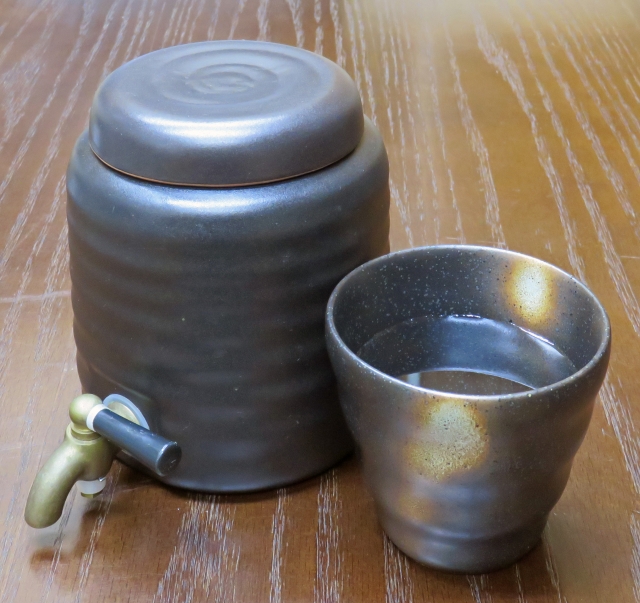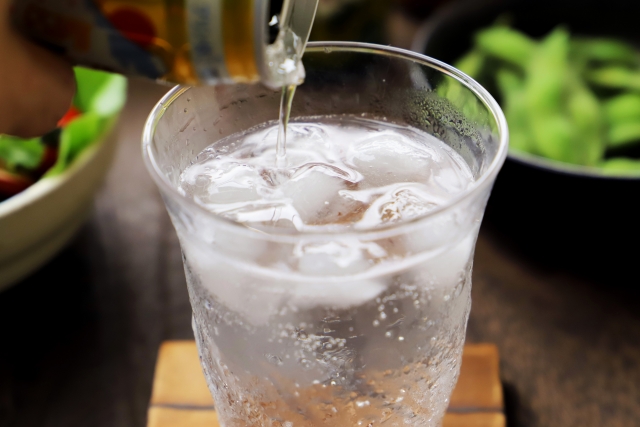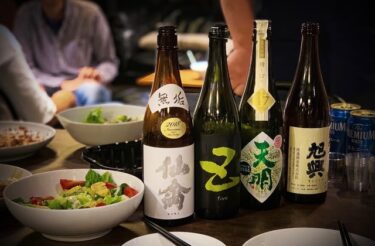Shochu is a traditional liquor in Japan that is distilled after fermenting various ingredients such as sweet potato, barley, and rice, and most of them have an alcohol content of about 25%.
It can be divided into many types according to the raw material and manufacturing method. There are various ways to drink, one is to enjoy the original flavor and umami of the ingredients, and the other is to mix lemon or grapefruit with carbonated water and drink as a light liquor.
Nowadays, Shochu is produced more than sake. There are also soba, chestnut, and sesame-based Shochu. Please try various Shochu.

What is Shochu and can I drink it?
Materials of Shochu
Shochu is made from various raw materials. Here are some typical ones.
Imo-shochu (Sweet potato Shochu)
Sweet potatoes and jiuqu (use any of rice jiuqu, barley jiuqu, or potato jiuqu)
Mugi-shochu (Barley Shochu)
Barley and jiuqu (use rice or barley jiuqu)
Kome-shochu (Rice Shochu)
Rice and rice jiuqu
Soba-shochu (Buckwheat Shochu)
Buckwheat, jiuqu (use barley or buckwheat jiuqu), and rice
Kokuto-shochu (Brown sugar Shochu)
Sugar cane, Jiuqu (rice jiuqu)
Kourui-shochu (Shochu group Ko)
Barley, rice, corn, molasses and jiuqu (use rice or barley jiuqu)
| Low-gluten | Wheat-free | Low FODMAPs | ||
| for Vegetarian |
| Restaurant | Food supermarket | Convenience store | Drug store |
Various types of Shochu
It is said that Shochu was introduced from Thailand more than 400 years ago. Originally, it was an area that was not suitable for making sake, and it was made using ingredients from that area.
The difference is that sake is brewed liquor, while Shochu is distilled liquor. Originally it was a cheap liquor for the common people, but it has become more popular due to technological advances and improved quality.

There are many types of Shochu, but first of all, they are divided into class Ko and class Otsu Shochu by the distillation method.
Class Otsu Shochu (Honkaku (authentic) Shochu)
Made by old-fashioned pot stills. The alcohol content is about 25%, and you can enjoy the original flavor and umami of the ingredients. There are many types depending on the type of raw material.
- Imo-shochu: Sweet potato (barley jiuqu or rice jiuqu may be used)
- Mugi-shochu: Barley (may use rice jiuqu)
- Rice-shochu: Rice
- Soba-shochu: Buckwheat (barley and rice are also used)
- Chestnut shochu: Chestnut (barley and rice are also used)
- Goma shochu: Sesame (also uses barley)
It is best to drink authentic shochu with rock or water to enjoy the flavor and umami of the ingredients.
Authentic shochu can be drunk at an izakaya restaurant. You can find barley shochu and sweet potato shochu in every store, but other than that, you can’t drink unless you are selling an assortment of shochu.
You can buy bottles and paper cartons at convenience stores, grocery stores, and drug stores, but you may not have chestnut shochu or sesame shochu unless you are in a liquor store.

Class Ko Shochu
Like whiskey, it is made by continuous distillation.
The flavor of the ingredients does not remain so much and there is no habit. The color is also colorless and transparent. Similar to vodka. Chuhai is made by adding ice and carbonated water to Shochu. Chuhai is a highball of shochu, and uses Class Ko Shochu instead of whiskey.
You can drink Chuhai at any Japanese izakaya. At that time, depending on the juice and flavor added, it is called Chuhai lemon, Chuhai grapefruit, Chuhai lime, etc.
Chuhai is also sold as a canned beverage, and is lined up next to beer at convenience stores and food supermarkets.
Try to drink Shochu!
How much ?
- Honkaku (authentic) Shochu
- Restaurant: $ 3-8 per 180ml
- Food supermarket or convenience store: $10-30 per 900ml
- Chuhai
- Restaurant: $ 3-5 per 180ml
- Food supermarket or convenience store: $1-2 per 180ml
Where can I drink Shochu?
- Izakaya restaurant
Izakaya is an intermediate format between restaurants and bars. However, depending on the store, there may be few types of sake. - Food supermarket, convenience store, and drugstore
Precautions when drinking Shochu
Gluten-free
Barley and barley jiuqu are sometimes used as a material of shochu.
Barley jiuqu is steamed barley sprinkled with aspergillus to decompose the starch and protein of the barley.
Whiskey and vodka are said to be gluten-free even if the raw material contains gluten, but since Honkaku (authentic) Shochu is made by pot stills, there is a high possibility that the ingredients of the raw materials remain in the product.
Barley shochu is easy to understand because it is made from barley, but please note that some other shochu also use barley jiuqu.
Japanese writer’s comment for Shochu
Imo-shochu from sweet potatoes is so popular with Japanese people.

Imo-shochu is produced in Kagoshima and Miyazaki prefectures, and it is said that there are more than 2,000 brands. The taste of them is completely different depending on the manufacturer.
Like wine, delicious and low-yielding shochu are traded at high prices, some of them cost more than $ 300 per liter. However, since it is not aged, it is not subject to speculation. I recommend that you drink as soon as you purchase.
There are various liquor cultures in Japan depending on the region. And the sake and shochu of that region goes well with the food there.
How about a trip to enjoy the sake and food of the region while watching the beautiful scenery of Japan?



